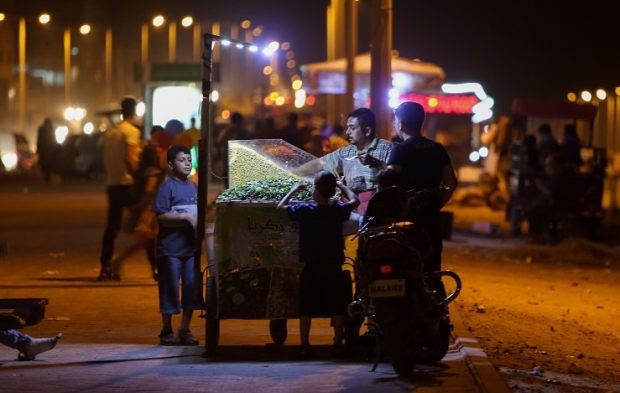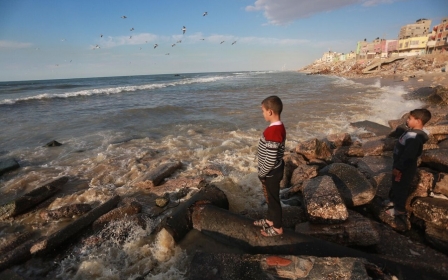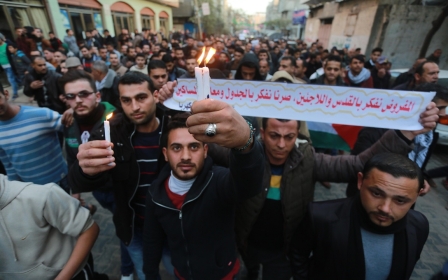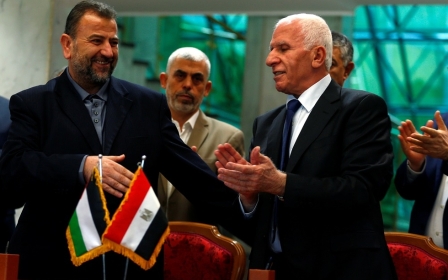The Gaza street that never sleeps
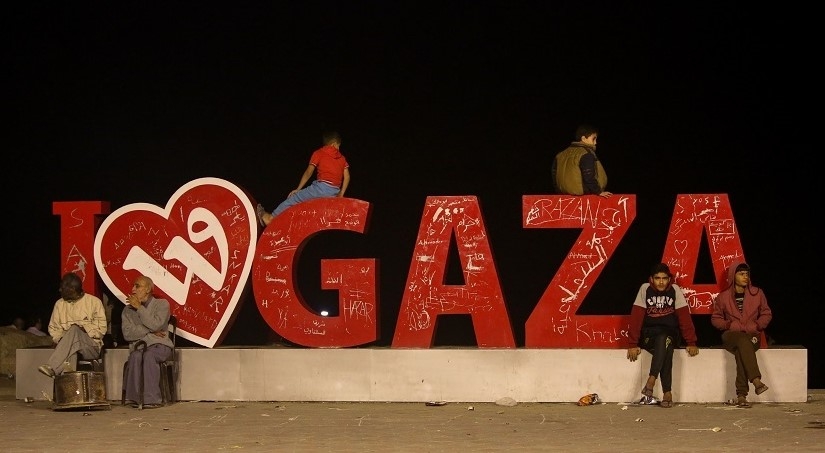
GAZA STRIP – As the sun sets in Gaza, a blanket of darkness starts to cover most of the Gaza Strip, except for one main road that continues to buzz with life and light: Al-Rasheed street.
Al-Rasheed stretches along the coast from the north to the south of Gaza with restaurants, cafes and street vendors scattered across the sidewalk, selling everything from falafel sandwiches, ice cream, hot drinks and fresh juice.
For this reason, many residents like 27-year-old Mohamed Abu Zeid flock to Al-Rasheed street to get away from the darkness. Every night he walks onto the street holding chairs, a tea pot, and his shisha pipe - a habit of his for almost two years now.
Abu Zeid lives in a rented house in Gaza's Sheikh Radwan neighbourhood with 10 family members including his mother, father and siblings. Abu Zeid’s father is a retired employee responsible for the family household and paying rent. Their previous larger house was bombed in the 2014 Israeli aggression against the Gaza Strip that left over 2,200 people dead.
“I have no job. I received a six-month temporary employment since I graduated [from university]. Our home is very cramped compared to our old bombed house that was big. The whole situation causes me great pressure, in addition to the long hours of power cuts," Abu Zeid said. "This is why I spend most of [my] time on Al-Rasheed street and in summertime I sleep here with my friends, hoping for peace of mind."
“Here we spend time with friends, discuss different topics related to football games and European tournaments, movies, American and Indian cinema,” he said. “We try to forget our worries, especially that we are unemployed, and finding a job is something difficult in the Gaza Strip.”
Al-Dalo and his friends studied business administration at Al-Quds University, yet they are all unemployed.
According to a 2016 World Bank report, the youth unemployment rate in Gaza has reached a “worrying” 58 percent.
Hamas took control of Gaza from forces loyal to Palestinian President Mahmoud Abbas in 2007, one year after it won legislative elections. Ever since then, the Gaza strip has been under an Israeli siege.
Last month, Fatah and Hamas signed a reconciliation deal in Cairo. The deal was expected to end a number of punitive measures taken by Abbas against Gaza, including reducing electricity payments that left the territory's residents with only a few hours of power a day.
But many residents say the situation has not improved, adding that they do not trust Palestinian officials.
“I can barely afford the essential needs of my family. This situation is very stressful for us, especially my children who need to play and access recreational areas, instead of spending most of their life in darkness,” said 37-year-old Ahmed al-Shanti.
Ahmed Abu Taqya is also no stranger to Al-Rasheed street. During the 2014 war on Gaza, Taqya sustained a leg injury that cost him his job as a carpenter.
The 29-year-old has recently gone through a divorce because of difficult economic conditions.
"For me, I feel relaxed when I sit for hours by the sea on this street,” he added.
In September 2015, the street took on new life and was inaugurated after more than $29m was spent on its reconstruction. As part of the project, solar panels were installed on the vital road to provide electricity at night.
The project was part of a number of reconstruction projects to rebuild the strip and was funded by the Qatari Committee for the Reconstruction of Gaza with a grant of $407 from the Qatari government.
The besieged strip has been repeatedly shelled by Israeli forces in four wars with Hamas since 2006, leaving Gaza in ruins.
No electricity in most homes
The street’s walls are decorated with graffiti and artwork including a line from a song by the legendary Lebanese singer Firouz. "See how the sea is large, that is how much I love you.”
Restaurants and cafes are packed with people playing cards and listening to music, and families enjoy some downtime until the late hours of the night.
“My children always complain about the electricity cuts. They need to be entertained. The whole situation is affecting their psychological status. I try to take them out to the sea at Al-Rasheed street so that they can play, run, and breathe fresh air,” Abu Hamad said while playing with his three children.
Street vendors
Ibrahim Masoud draws many customers to his cart. The aroma of his signature Turkish and Arab coffee lures people in, while old Arabic songs from the 1940s such as Euphoric Nights in Vienna by the famous Syrian singer Asmahan play in the background.
My children always complain about the electricity cuts. They need to be entertained
- Mustafa Abu Hamad
People huddle around his cart to discuss unemployment and vent about other challenges facing people living in besieged Gaza.
During the day, he works serving coffee in Tel al-Hawa, an affluent district which includes most of Gaza's universities; and at night he works on Al-Rasheed street.
“Most of the street vendors were vocational workers, but the tightened siege has caused them to lose their jobs. I used to be a metalworker, but I stopped since the siege," he said. "Now I work as a street vendor. I enjoy my work because it helps me provide for my family."
Due to the difficult economic situation in Gaza, street vendors are permitted to work there without paying any fees to the municipality. Vendors say that they earn a good income, especially during the summer.
Hatem al-Sheikh Khalil, the public relation managers at the municipality of Gaza, estimates that around 10,000 people gather on Al-Rasheed street on a daily basis. According to al-Sheikh, restaurants, hotels and cafes there have installed generators to provide their customers with electricity. Most families in Gaza cannot afford to buy fuel to run their own diesel generators at home.
“Al-Rasheed street is one of the most important streets in the Gaza Strip, as it is the centre of the most famous restaurants, hotels, and cafes. It has lights on,” he said.
This article is available in French on Middle East Eye French edition.
New MEE newsletter: Jerusalem Dispatch
Sign up to get the latest insights and analysis on Israel-Palestine, alongside Turkey Unpacked and other MEE newsletters
Middle East Eye delivers independent and unrivalled coverage and analysis of the Middle East, North Africa and beyond. To learn more about republishing this content and the associated fees, please fill out this form. More about MEE can be found here.



